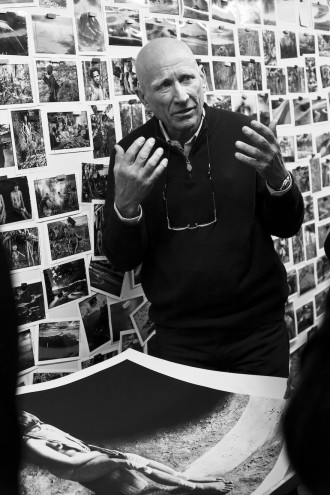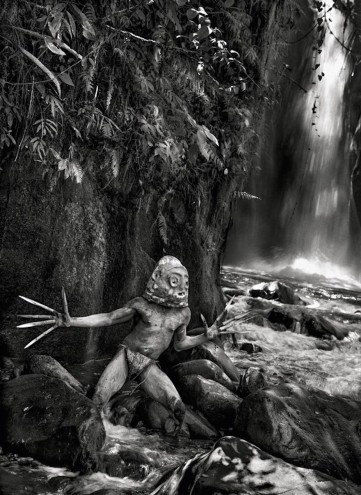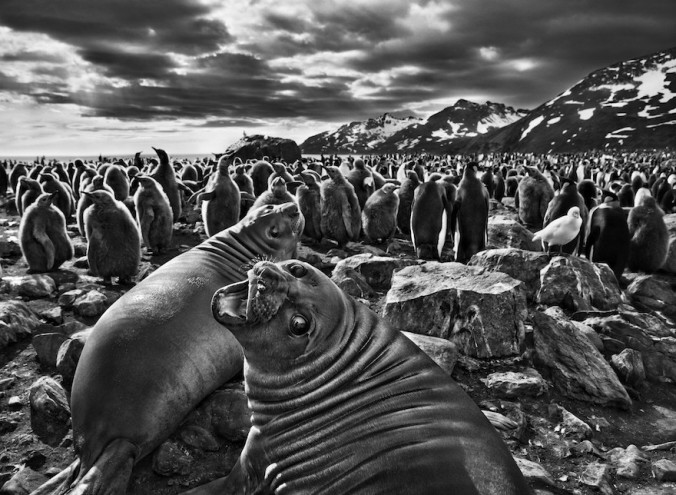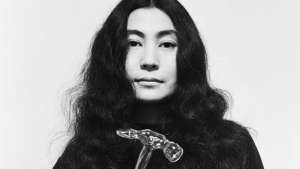From the Series
Legendary photographer Sebastião Salgado has spent four decades documenting some of the horrors of modern human history, including famine, war and poverty. Salgado is well known for his immersive techniques, empathy with his subjects and his large-scale, long-term series. After witnessing the atrocities of the Rwandan civil war in the 1990s, Salgado claims he lost all faith in the human race. Temporarily losing interest in his art, he returned to his family farm in Brazil and found the once-lush land had become a virtual desert. So he began the long process of reforestation. It was from his home in Brazil that he planned his most recent series “Genesis”. It's a profound look at man’s connection to the natural world.
Brazilian born, Salgado studied economics at the University of Sao Paulo and worked as an economist until his architect wife Lélia bought a camera to photograph buildings. From the moment he looked through the lens, he was hooked, and discovered that photography gave him more pleasure than anything else ever had.
Over the course of his extraordinary career, Salgado has produced three in-depth series. The first, “Workers” (1993), was the only time Salgado acknowledges that his work had a political slant. He had studied and been influenced by Marxism when he was young, and was concerned about the working class in an age that was moving rapidly towards industrialisation. His photos recorded scenes from the goldmines of Serra Pelada in Brazil.
“Migrations” (2000), Salgado’s second series, looked into the movement of global populations from rural to urban environments in a desperate search for work.
“Genesis” is Salgado’s most recent work. After his experiences in Rwanda left him traumatised, he moved with his family back to his childhood home in the countryside of Brazil. Where he remembered forests and abundant wildlife, he found only desert. With the support of his wife he started an environmental project: the huge undertaking of replanting trees.
Salgado and his wife planted more than two million trees and though many did not survive, they slowly started to grow into a forest and the wildlife began to return – the insects and birds first.
While involved in the reforestation, Salgado rediscovered his love for photography and the idea for “Genesis”, an eight-year project that would take Salgado to 35 countries in search of the most pristine places in the world, was born.
The series is compiled with dramatic black and white photographs and was intended to raise public awareness on the issues of climate change and the environment.
Salgado travelled to places as far-flung as Siberia, Democratic Republic of Congo, Papua New Guinea and Alaska, photographing remote landscapes, seascapes, wildlife and indigenous peoples. He remembers one trip where he spent 47 days herding thousands of reindeer with the Nenets people in arctic Russia, in temperatures lower than -35 degrees – hard for a man in his 60s who’d grown up in the warmth of Brazil.
Salgado’s son Juliano Salgado co-directed the film “The Salt of the Earth” with Wim Wenders. The combination of the two brings to the film Wenders’ mastery of the documentary form and the intimate access provided by the family, like the scenes of the elder Salgado at home.
Juliano said that his father was touched when he saw the film: “He was seeing how I see him.”
Sebastião maintains that photography is his language.
“Photography allowed me to see anything that I wished to see on this planet. Anything that hurts my heart, I want to see it and to photograph it. Anything that makes me happy, I want to see it and to photograph it. Anything that I think is beautiful enough to show, I show it. Photography became my life.”











